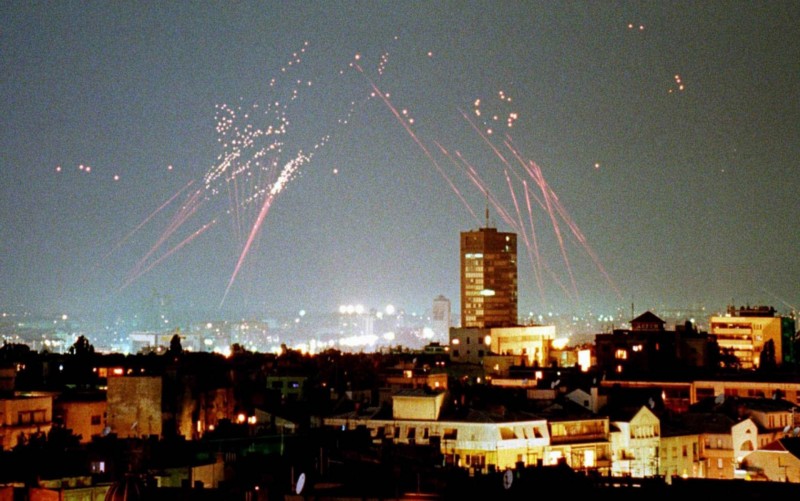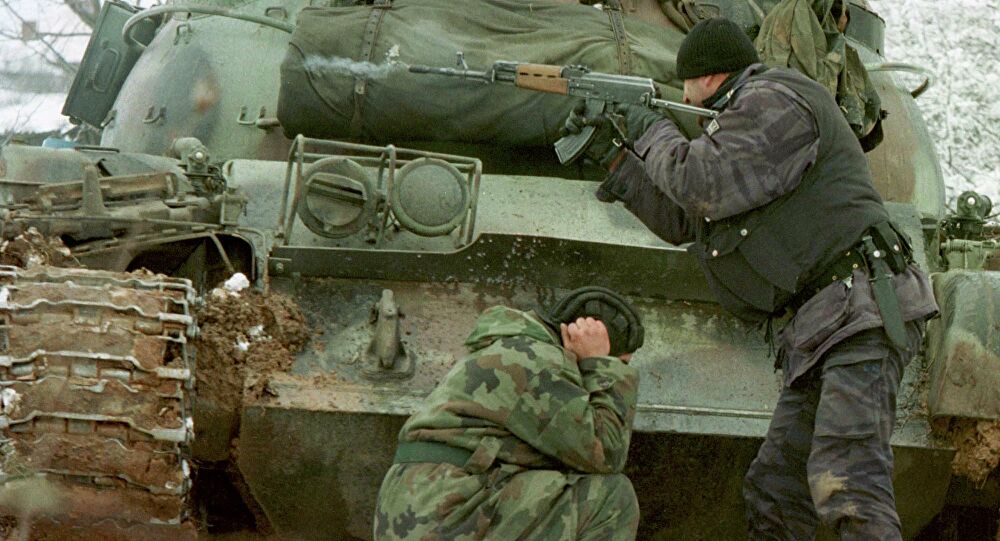24th of March 1999, Kosovo Air Campaign. Boots on the ground or air power?
The Kosovo campaign had two aims: To force the Yugoslav leadership to withdraw its army and paramilitary units from the Kosovo province and to degrade the Yugoslav army’s ability to fight and operate. Western powers were unwilling to commit ground troops to a campaign that had the potential to be bloody. The alliance also wanted to avoid the campaign looking like an invasion or a war waged against the Yugoslav people. NATO bet on air power alone, hoping that overwhelming air power and technological superiority would be enough to force the Yugoslav army out of Kosovo. The results of the campaign were mixed. The campaign did last 78 days, between the 24th March and the 10th June. During that time, NATO air forces flew 38,000 sorties of which 10,484 were strike mission. The Rules of Engagement were very strict: NATO did not want to alienate the local population and was wary of causing collateral damage that would be broadcast on live TV across the globe. The aim was to inflict just enough damage to the Yugoslav infrastructure to force its leadership to back off, without utterly ruining the country. However, any military installations and units in Kosovo was fair game.

The major success of the air campaign was to fly that many sorties without losing a single airman. Only two planes were lost. The Yugoslav air defences were dense, but obsolete. The air campaign devastated the Yugoslav air force, destroying 121 planes on the ground and in the air. Finding and destroying ground targets proved much more difficult, though: While NATO records at press conferences at the time rolled out big numbers of “kills”, studies later on showed that only 9 MBT, 20 APC/IFV and 36 Artillery systems were ever destroyed, alongside 900 to 1200 men killed. The reasons were multiple: NATO planes stayed at medium to high altitude to avoid being targeted by SAM and MANPADS. But this made it difficult for the pilots to identify targets accurately. The weather was overcast for most of the campaign, the hilly topography favoured the defenders. Furthermore, the Yugoslav army was very good at spreading and disseminating its forces throughout the local population as well as being master at camouflage (a French pilot described looking for Yugoslav units hidden in Kosovo as hunting for Marmots). Finally, The Yugoslav army seemed pretty good at quickly building and erecting decoys. It seems many of those decoys were hit several times. It also seems that many of the kills reported by the pilots at the time were actually misses or damaged (and subsequently repaired).

Operation Allied Force/Noble Anvil failed to weaken the Yugoslav army. In fact, while at the beginning of the campaign, there were 20,000 Yugoslav troops in Kosovo, there were 55,000 of them present in the province in the last week of the campaign. When the Yugoslav leadership finally relented, the units of the Yugoslav 3rd Army that withdrew from Kosovo at the end of the campaign did so in front of observers, in good order, riding on well serviced vehicles and looking battle ready. But while the 20,000 precision guided weapons, 450 Tomahawk and 90 air-launched cruise missiles (79,000 tons of explosives, in total) did little to dent the Yugoslav army, they cost the Yugoslav economy a staggering $29.6 billions. That, in the end, was enough to open the door to a political solution. This campaign also showed division within NATO: Greece, a NATO member state, actively helped Yugoslavia. US aircrafts flew 2/3 of the missions, while other NATO air forces struggled to keep up with the sustained high tempo of operations. maintenance needs, long supply chain and lack of spare parts and ammunition, making them run out of steam before the end of the operations.










